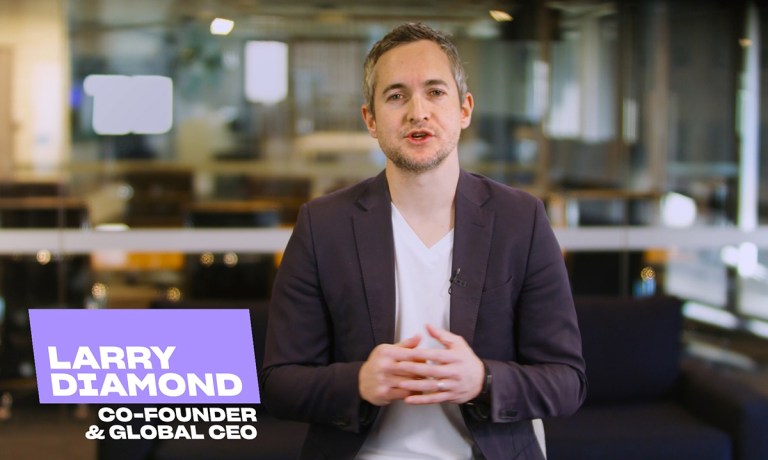
Talk to anyone in financial circles about the future of payments and it likely includes buy now, pay later (BNPL). For months, a steady stream of announcements from both retailers and payments companies have filled the press on almost a daily basis, culminating in the blockbuster news this month about Square’s $29 billion acquisition of Afterpay.
Read More: What The Square Afterpay Deal Means For BNPL, FinTech, BigTech And Banks
But buying something one day with the promise of paying for it at a later time is hardly a new concept, Larry Diamond, co-founder and CEO of global BNPL provider Zip, told Karen Webster in an interview. Rather, it’s the age-old concept of credit that’s “going through a little bit of a metamorphosis.”
“Credit cards, which have been great products for the American economy, are really the older version,” Diamond said. “I think the reason that buy now, pay later has been so successful is it delivers a better and fairer alternative to the credit card” that is interest-free, encourages faster paybacks and is digitally native. “It’s of course credit,” he said. “But it’s perceived as using your own money through this idea that I can pay back as I earn, I can do it interest free, and I don’t get stuck with very high balances that are revolving on high interest.”
PYMNTS research has found nearly 34 percent of consumers avoid credit cards because interest rates are too high, and 15 percent don’t trust credit card companies. On the other hand, 55 percent of consumers choose BNPL because it’s easy to use, and over 37 percent trust BNPL as a payment method. Approximately 29 million U.S. adults have used BNPL in the last 12 months.
Related: Financially Underserved Consumers 3X More Likely To Use BNPL Options At Checkout
To be sure, in a hot and increasingly crowded BNPL market, any new player needs to distinguish itself, and Zip is no exception. What the company has going for it, Diamond said, is that they have a presence in 12 countries and serve more than 7.3 million consumers. “Particularly as commerce and retail and merchants become much more global in nature and customers shop from all around the world, what’s really unique about us is through a single integration, we can open up multiple markets,” he told Webster.
Zip acquired New York-based Quadpay in June 2020, creating a multi-billion-dollar company with a foothold in the U.S. market, where BNPL has not penetrated as much as it has in other parts of the world. Last month, Zip merged the two brands into one and began rolling out a new brand identity. The company plans to leverage a $400 million investment to fuel brand recognition in America.
Diamond said Zip’s strategy has been to think of the merchant as the first customer, “and then through delivering a great experience for the merchant, we’re able to acquire our first consumer.”
“We continuously put our customers and merchants at the center of all that we do to optimize the experience and meet their needs,” Diamond said. He told Webster that what he wants Zip to be known for is giving people confidence and the ability to control their financial lives.
Expanding The Market
If Zip, and BNPL as a sector, truly want to disrupt the credit card game and become the go-to payment option for consumers, “we have to be in all categories,” Diamond said. Fashion and cosmetics are areas where Zip has seen success, he noted. However, there are still areas of the U.S. economy that are “very much underpenetrated,” including consumer electronics, health services, bills, utilities and pets.
“In the U.S., if you look at the share of buy now, pay later across total retail sales, it’s obviously quite a noisy and exciting space, but it’s still very, very small,” Diamond said. “So I think there’s a long, long, long way to go.”
Additionally, Diamond said that BNPL providers need to expand their product offerings across all age groups over the next few years. Use of BNPL in the U.S. thus far has mainly been driven by younger digital-first generations, such as millennials and Gen Z consumers, but globally, it’s starting to move into other age brackets as well.
Diamond said he hopes that in the next year or two, the U.S. embraces the ability to split any transaction, “whether it’s a short, low-dollar purchase that you pay back in a couple of months or it’s a larger purchase that you can pay back over time.” He also wants to bring personal finance management tools into the Zip app to help consumers make sense of their spending “and really de-clutter, make life a bit easier for the average American.”